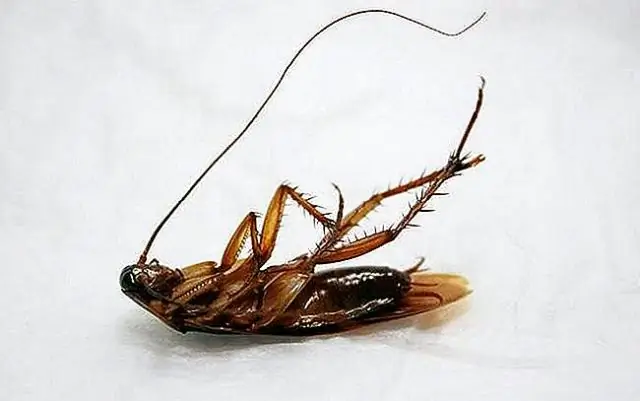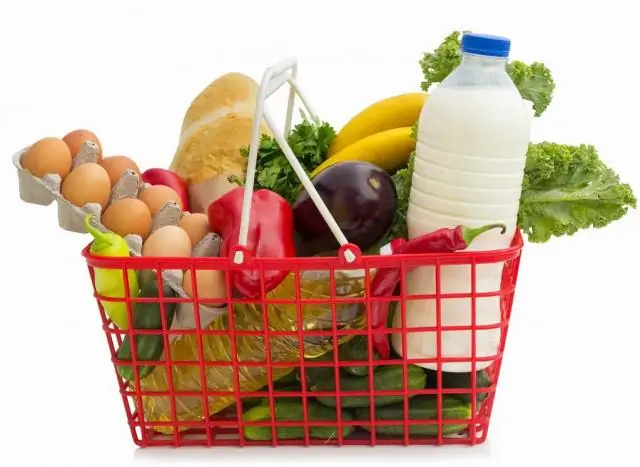
Table of contents:
- Author Bailey Albertson [email protected].
- Public 2024-01-17 22:26.
- Last modified 2025-06-01 07:32.
Gherkin Ekol F1 - the best variety of cucumbers

Cucumber is our most popular vegetable. Many species have been bred. One of the varieties recognized among gardeners is Ekol F1, which is distinguished by early maturity, resistance to temperature stress and high yield. The description of the rules of care will help novice growers.
Content
- 1 History of the Ecole F1 variety
- 2 Description
-
3 Landing
- 3.1 Sowing seeds on site
- 3.2 Growing seedlings
-
4 Caring for a cucumber plant
- 4.1 Watering
-
4.2 Top dressing
- 4.2.1 Table: Fertilization
- 4.2.2 Advice from vegetable growers
- 4.3 Bush formation
- 4.4 Support
-
5 Diseases and pests
- 5.1 Table: Dangers for Cucumbers
- 5.2 Photo gallery: diseases and pests of cucumbers
- 6 Harvesting
- 7 Reviews of vegetable growers about the variety
History of the Ecole F1 variety
Ekol F1 is a variety obtained by the Dutch breeding company Syngenta Seeds. In 2007, it was included in the State Register of the Russian Federation for the North Caucasian region. The farmers were presented with a novelty of gherkin seeds, suitable for growing in open ground and in greenhouses.

Ekol F1 variety is intended for cultivation in greenhouses and open field
Description
Parthenocarpic variety (forming fruit without pollination). Plants are medium-sized (2.5-3 m), with a compact bush, have a "bouquet" type of flowering, forming 4-5 fruits in one node.

The hybrid has a bouquet type of flowering - 4-5 fruits in one node
A characteristic feature of the mini-gherkin is the deep green color and pronounced tuberosity of the fruit, as well as thorns, which are located more often than in other varieties. This type of peel is called a Dutch shirt. Zelentsy are cylindrical, weighing 60-70 g, 6-10 cm long, 2.5 cm in diameter. The yield is excellent: with proper care, the vegetable crop yields 18-20 kg per 1 m 2, and when picking pickles - 8 kg. A large number of fruits allows you to remove small greens 4-5 cm long from the bush. Cucumbers have a dense structure, no voids are formed during heat treatment. Pulp without bitterness. The fruits have a beautiful presentation due to the good length to width ratio of the fruit - 3: 1.

A characteristic feature of the Ekol F1 variety is the rich green color and tuberosity of the fruit
The variety is characterized by early fruiting - the greens appear 42-46 days after germination. It develops equally well both in greenhouse conditions and in the open air. Ekol F1 is resistant to major bacterial diseases.
Landing
The Ekol F1 variety can be grown by seed and seedling methods. For cucumbers, water and air permeable soil is needed in a place protected from the wind.

Choose a bright place for the borage
Sowing seeds on the site
Seeds are planted in the ground in May, when the soil warms up to 15 o C.
- Before planting, the seed is soaked in a nutrient solution (1 tsp. Nitrofoski and 1 tbsp. L ash per 1 liter of water).
- In the fertilized bed, grooves are made every 10 cm.
- Moisten the soil.
- Seeds are planted in 5 pieces per hole, deepening them by 3 cm.
- When it gets cold, the beds are covered with lutrasil.
- After 1.5 weeks after planting, the seedlings are thinned out, leaving 15 cm between the cucumbers.
- After the appearance of the leaves, they are thinned again so that there is 30 cm between the bushes.

When sowing cucumbers in the ground, put several seeds in the hole
Growing seedlings
Plants grown by seedlings begin to bear fruit much earlier. Cucumbers do not like when they are transplanted, so it is better to sow the seeds immediately in separate small containers. Sowing is carried out in April.
- A soil mixture is prepared from peat, humus, sod land and sand (2: 2: 1: 0.5).
- The seeds are soaked in a solution of potassium permanganate or Zircon.
- Wrap in a damp cloth for germination for 2 days.
-
Seeds with 5 mm sprouts are planted in the soil to a depth of 2 cm.

Sprouted cucumber seeds Sprouted cucumber seeds are planted in the substrate
- Sprinkle with water, cover with polyethylene and put in heat (25 ° C).
- With the appearance of sprouts, the film is removed and the seedlings are transferred for 2-3 days to a cool room (19 ° С during the day, 15 ° С at night).
- In the future, it is necessary to maintain the optimum temperature for plants: at night - 17 ° С, during the day - 22 ° С.
- Watered 2 times a week with water at room temperature.
- After the growth of the first leaf, fertilize with mullein infusion (1:10).
- They are fed again a few days before planting in the garden (10 g of urea, 15 g of potassium sulfate and 35 g of superphosphate per 10 L of water).
-
Seedlings with 2-3 true leaves are planted in the ground.

Seedlings of cucumbers When 2-3 true leaves appear, the seedlings can be planted in the ground
The seedling breeding process takes about a month. 3-4 days before planting with the establishment of warm weather, when the temperature in the greenhouse for at least 20 of the C and the soil warms up to 15 on C plants bring to the fresh air for 3 hours, protecting from the sun and wind by means of spunbond.
It is better to plant seedlings on the site in cloudy weather after lunch.
- Pre-dug up a garden bed, flavored with manure.
- Wells are made 15 cm deep according to the 30x60 scheme.
- Spill the hole with water (5 L).
- A seedling with earth is removed from the cup, after moistening.
-
The seedling is lowered into the hole, deepening to the seven-lobed leaves.

Transplanting The plant is lowered into the hole and covered with earth
- They compact the soil.
Cucumber plant care
The variety is considered picky, but a large amount of vegetables can be obtained only by following the necessary agrotechnical rules.

You can wait for a good harvest of cucumbers only if you take proper care of the plants.
Watering
Proper watering is important for the growth and fruiting of cucumbers, as they love moisture very much. With insufficient irrigation, the greens will grow a little, and their taste will not be very good. Water the borage in the morning or evening with water heated in the sun after 3-5 days (more often at the time of the appearance of fruits). Usually, 30 liters of water per 1 m 2 is sufficient, in extreme heat - more, with prolonged rains, humidification is stopped.

Cucumbers should be watered in the morning or in the evening with water heated in the sun, once every 3-5 days, more often during fruiting
After each watering and rain, the soil is loosened in the row spacing to a depth of no more than 8 cm.
Top dressing
Vegetable crops are fed several times per season. Timely nutrients form healthy plants and ensure high yields.

Timely fertilization will ensure high yields
Fertilization table
| Frequency of application | Fertilizer for 4 m2 |
| 2 weeks after planting seedlings in the ground | Foliar dressing with potassium salt, superphosphate, ammonium nitrate (10 g per 10 l of water) |
| 14 days after the previous feeding | The same microelements with an increased dose (20 g per 10 l) |
| Weekly when fruiting | Potassium sulfate (30 g per 10 l of water) |
| From the beginning of fruiting to the end of collection with an interval of 15 days | Foliar dressing with magnesium nitrate (15 g per 10 l of water) |
Vegetable growers tips
- planted seedlings can be fed with a yeast solution that stimulates growth. Such feeding is carried out one week after the application of nitrogen fertilization, and again after phosphate fertilization;
- good organic feeding - manure infusion (1:10), applied every 2-3 weeks;
- it is useful to fertilize cucumbers with bread leaven. It is prepared like this: a bucket filled with 2/3 crusts of brown bread is poured with water and put under oppression in a warm place for a week. The resulting infusion is diluted with water 1: 3 and watered at the root of 0.5 liters per bush.
Bush formation
This hybrid has medium branching of lateral shoots. After the formation of 6-7 leaves, the main stem is pinched, which contributes to greater growth and an increase in the number of greens. Leave 1-2 strong stems, cut off the rest of the shoots.
Support
The cultivation of the Ekol F1 variety involves the use of supports that hold the bush with many fruits vertically. If the plant is left without support, then the lashes will creep along the ground, which often leads to diseases of the cucumbers.

To support the lashes, you must install a trellis
Tying on cords or setting the trellis facilitates care and harvesting, and helps to ventilate the bushes.
Diseases and pests
The hybrid has good immunity, is resistant to brown spot, but in an unfavorable environment it can be affected by diseases.
Table: Dangers to Cucumbers
| Disease / pest | Signs | Prevention | Ways to fight |
| Tobacco mosaic | Yellow spots form on the leaves and fruits. | Cleaning in autumn and disinfection of cultivated areas. | Sick bushes are dug up and burned. |
| White rot | A white fluffy bloom forms on the stems. Cucumbers quickly rot. |
|
|
| Peronosporosis | Brownish spots appear on the upper side of the leaf, and a gray-violet bloom on the lower side (at the spots). |
|
|
| Aphid | The pest feeds on the sap of the foliage, causing it to turn yellow, curl and dry out. |
|
|
| Spider mite | Light dots appear on the leaves. From below, the sheet is covered with cobwebs, the upper part becomes spotty. The foliage dries up. | Remove weeds regularly. |
|
| Whitefly | The surface of the leaves first turns white, then blackens. | Do not plant cucumbers close to fruit trees. | The leaves are washed with clean water. |
Photo gallery: diseases and pests of cucumbers
-

White rot - White rot covers cucumbers and leaves
-

Peronosporosis - Peronosporosis weakens the plant, leading to loss of leaves
-

Aphid - Leaves affected by spider mites dry up
-

Tobacco mosaic - Tobacco mosaic is virtually untreatable
-

Whitefly - Whitefly causes black foliage
-

Aphid - Aphids suck out plant sap, causing great harm.
Harvesting
Zelentsy can be harvested all summer until autumn. They are removed from the bush in 2-3 days. Rare harvests reduce the yield and quality of zelents.

Zelentsy are perfect for pickling
Ekol F1 cucumbers are good for preservation. For these purposes, use small cucumbers only 5-7 cm in length.

The fruits must be removed every 2-3 days.
Greens are stored in the refrigerator for 5-7 days. And if you put them in an open bag, and cover them with wet gauze on top, the shelf life can be increased to 10 days.
Cucumbers can be used to prepare many different dishes: salads, snacks, etc. But, of course, fresh cucumbers are tastier and healthier.

Ekol F1 cucumbers are great for pickling
Reviews of vegetable growers about the variety
Many people like small elastic gherkins of the Ekol F1 variety. The early maturity of the variety allows harvesting at the beginning of summer. Observing the rules of agricultural technology, you can grow viable and strong plants that bear fruit abundantly.
Recommended:
How To Clean An Electric Oven Outside And Inside From Carbon Deposits And Grease: Catalytic And Other Types Of Cleaning + Video

How to clean an electric oven from dirt and carbon deposits inside and out: using chemistry, folk remedies and self-cleaning technologies
Fleas In The Apartment: Where And How To Get Rid Of Their Appearance In The House Quickly And Efficiently Using Dichlorvos, Wormwood And Other Means + Video

Where do fleas come from in a house or apartment and how to determine their presence. Effective ways to help get rid of parasites quickly
Rice Vinegar: What Can Be Substituted At Home For Sushi, Rolls And More; Apple, Regular And Other Options + Photo And Video

Features of rice vinegar. How to cook it yourself at home. What vinegars and acids can you replace it with? Proportions for different dishes
How To Make Yogurt At Home - Recipes For Making Drinking, Greek And Other Options From Milk (including Goat Milk), In And Without A Yogurt Maker, Video And Reviews

Properties and types of yoghurts. How to choose products. Homemade recipes in a yogurt maker and without
How To Remove Iodine From Clothes And Other Surfaces, Than To Wash It From The Skin, Various Methods And Means + Video And Photo

How to remove iodine from different fabrics, wash stains from furniture, body and other surfaces. Effective ways with instructions for use with photos and videos
